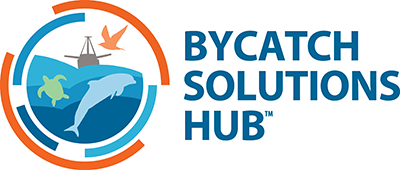Key Takeaways
2024
- 670 on-demand retrieval devices available for loan in the NEFSC Gear Lending Library
- 70 trial participants from fixed gear (primarily lobster) and mobile gear (brought on to test virtual gear marking technologies) fisheries.
- 12,384 total hauls with on-demand gear reported from 2020 to February 2025.
2024/2025 Update:
The NEFSC currently has 670 on-demand (also called ropeless) retrieval devices available for loan for Southern New England harvesters to use free of charge. To date, 70 trial participants from fixed gear (primarily lobster) and mobile gear fisheries have trialed the gear. Mobile gear harvesters were brought on primarily to test virtual gear marking technologies.
These participants assisted to complete 12,384 total hauls with on-demand gear technologies from 2020 to 02/18/25, of which 10,901 occurred in areas/seasons open to commercial fishing, using hybrid trawls (one end with a buoy, one end with an on-demand device). Additionally 1,483 occurred on fully on-demand trawls fished in lobster fishery Atlantic Large Whale Take Reduction (ALWTRP) Plan restricted areas in 2023, 2024, and the start of the 2025 season.
2023 Update:
From March through June of this year, ten lobster fishermen worked with the Northeast Fishery Science Center (NEFSC) to deploy fully ropeless trawls in the Massachusetts Restricted Area and South Island Restricted Area, fishing zones closed to buoy lines to protect North Atlantic Right Whales.
As of June 12th, 527 trawls were set and hauled with an 89.5% retrieval success rate1. This means that 89.5% returned to the surface on the first retrieval attempt with no complications from human error on the gear prep and set. Grappling is a common way of retrieving unsuccessful hauls and therefore actual gear loss was much lower than the 11.5% unsuccess rate. For comparison, it is estimated that 5-15% of lobster gear is lost annually from the fishery using traditional buoy lines2.
In Massachusetts state waters, 225 fully ropeless trawls were hauled with a 93.8% retrieval success rate, resulting in a catch of 3,338 lobsters. Fishermen also reported sighting 14 of the right whales while fishing1.
Just as important, there were zero gear conflict incidents. This includes not only with other lobster harvesters, but also overlapping mobile fleets such as scallop dredgers. For the trials, all vessels were outfitted with EdgeTech ropeless systems and a table with the EdgeTech Track Trapper app installed. The EdgeTech trap mounted transducer can “speak” with in-hull transducers in vessels and therefore provide real-time updates on the trap location underwater when vessels pass within detection range. This real-time location is then updated onto the Trap Tracker mapping platform, which allows anyone with the app open to see exactly where the traps are located on the ocean floor and plan their sets or tows around them.
These trials are another step towards large-scale implementation of ropeless systems in demersal pot/trap fisheries that create high entanglement risk for large whales, especially the North Atlantic Right Whale. While considered highly successful, trap density was purposefully kept low to test the gear location software in an environment with a low likelihood of gear conflicts. Results and fishermen feedback will help improve geolocation software to allow future fishing to occur in areas with a higher gear density.
Read More
